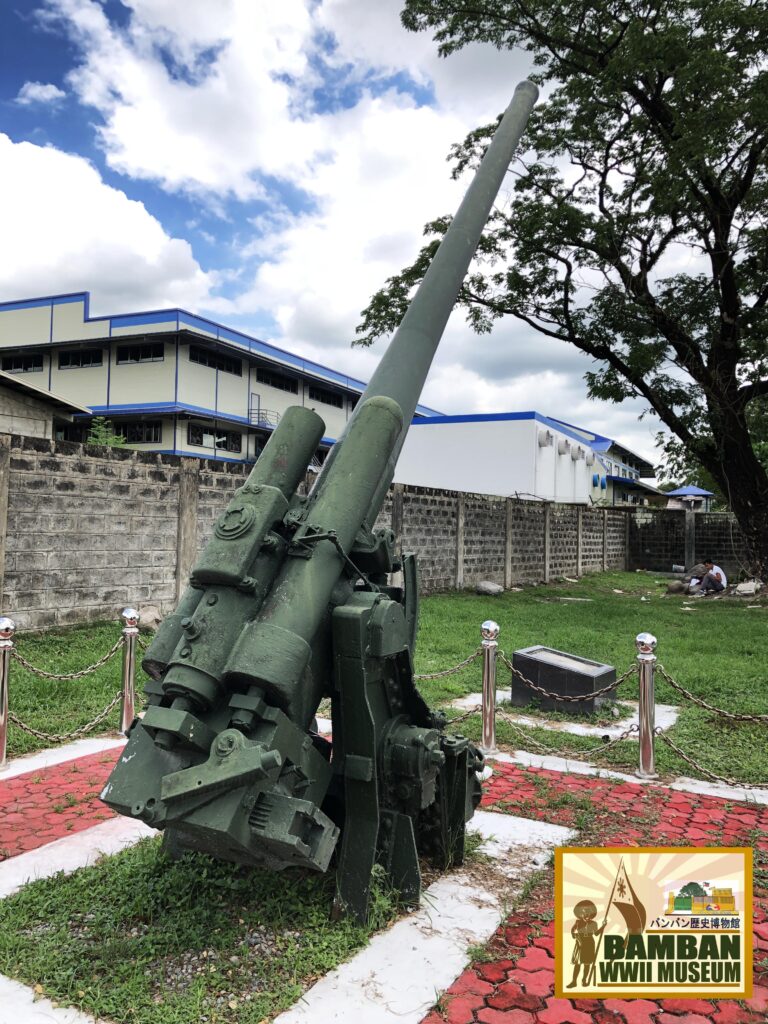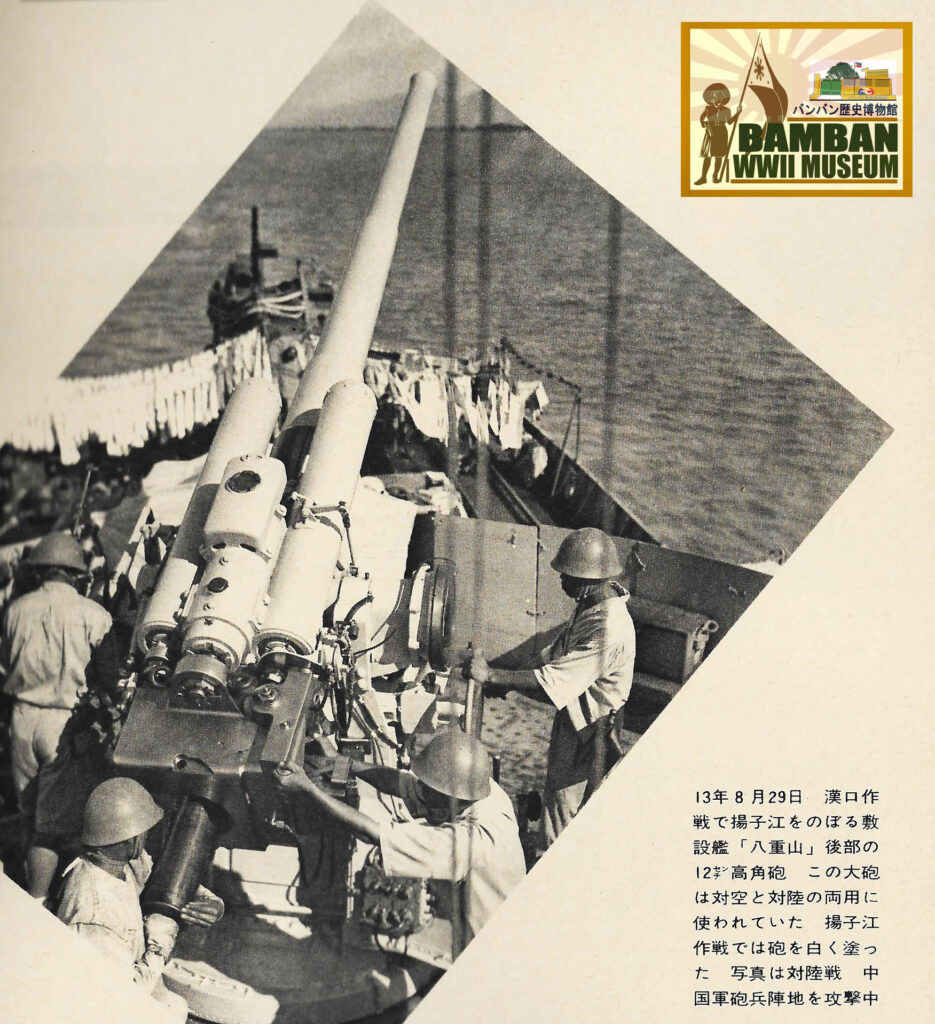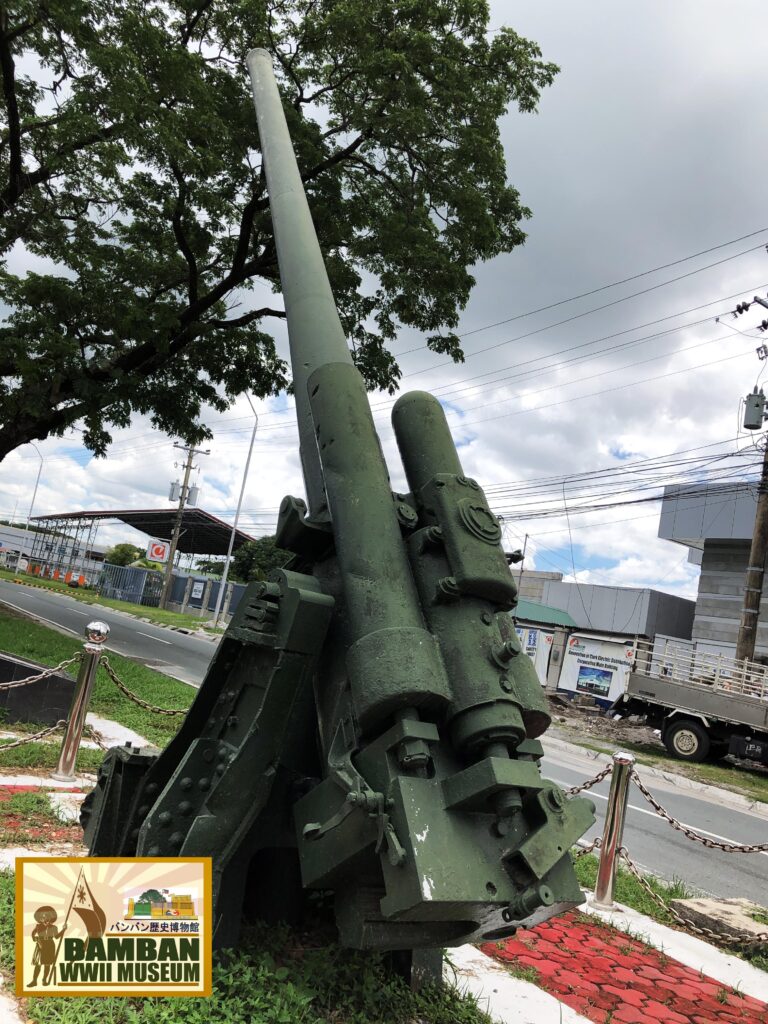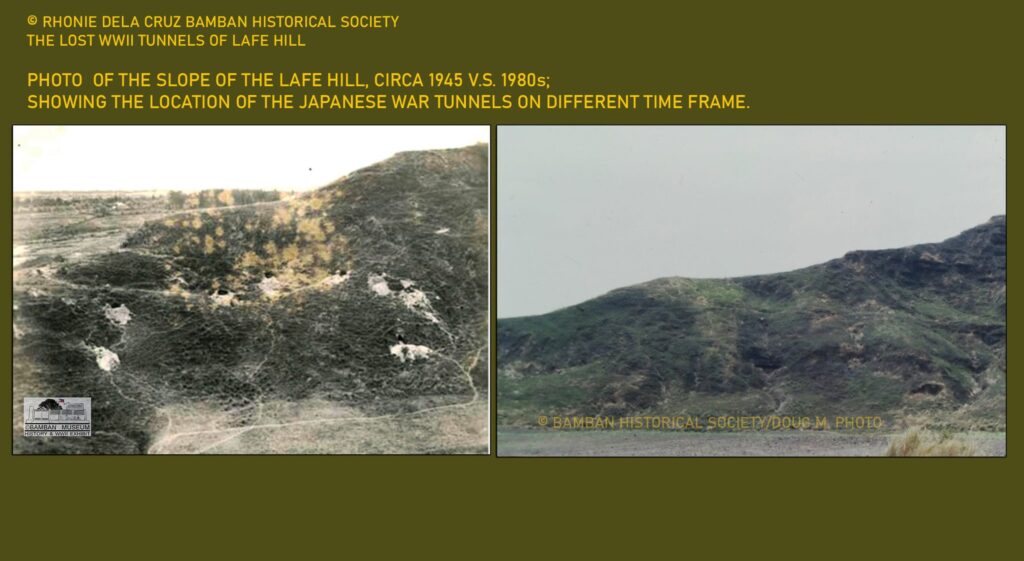
INVESTIGATING HISTORY:
JAPANESE TYPE 10 120-mm DUAL-PURPOSE NAVAL GUN AT CLARK FIELD クラーク飛行場にある日本海軍 10 式 120 mm 砲
The last of the Japanese Type 10 at Clark Field can be found near the area of the former 1961st Communications Group, emplaced on both side of the road. Many of these Type 10s were scattered around Clark Field air strips, as far as the Mabalacat and Bamban Airfields., aside from the 75mm anti-aircraft guns.
During WWII, Major Eguchi was in command of the 10th Air Sector, covering the airfields of the Clark including the various airfield battalions and companies in the vicinity of the air strips.
Citing Japanese sources, it was probable that the Type 10s scattered along the air strips of Clark and the Mabalacat West Airfield under the 10th Air Sector belonged to 84th Field Anti-Aircraft Artillery Battalion under Captain Nagai Haroyuki. With the start of the land battle at Clark and the Bamban Hills, many of these Type 10s were reported to be operating and firing from Clark Fielld area and west and southwest of the Bamban Hills, firing on the American forward elements and rear supply lines. In the initial days of the fighting at Clark and Bamban Hills on January 23-25 1945, Type 10s along with 75mm guns fired about 200-300 rounds on American targets.

With the advance of the 37th Division in Mabalacat, particularly the 145th Infantry, 7 Type 10 120-mm naval guns were captured in the vicinity of the old barrio of San Joaquin, which was close to both the Mabalacat East and West Airfields.
Clark Field and the other airfields in Bamban and Mabalacat were cleared by the end of January 1945 both by the 40th and 37th Division U.S. Army. The large numbers of Japanese anti-aircraft guns that littered the airfields were mostly destroyed during the fighting, by artillery counter-battery fire and some captured during the clearing operations in late January 1945.
By the end of the war, Clark and the former airfields were cleared from the Japanese aircraft wrecks and the anti-aircraft guns, cannons and machine guns. As Clark became the home of the 13th Air Force post-war, there were instances that anti-aircraft guns including Type 10s were recovered.
At present, only two of these Japanese Type 10 remain of the once formidable anti-aircraft defenses of Clark Field. I had visited these guns many times, and I never lost enthusiasm in touching pieces of history of WWII at Clark Field.
Rhonie Dela Cruz
Bamban WWII Museum/Bamban Historical Society
Bamban Center for Pacific War Studies
Citation:
(1) XIV Periodic Summary, January 25-26, 1945 “Artillery”, HQ Combat Reports – 37th Division at Clark Field, NARA, Bamban Historical Society Collection, Bamban Museum.
(2) Smith, Robert Ross. United States Army in WWII – The War in the Pacific – Triumph In the Philippines.
(3) Japanese Monograph No. 9. “Outline of the Kembu Group Operation – Clark Sector, Record of the Philippine Operations Record of the Philippine Operation Vol. III Part 3.
Photographs:
(1) Japanese Type 10 120-mm dual-purpose naval gun mounted aboard Japanese ship Yaeyama.
(2-3) Photographs of the Type 10s at Clark Freeport Zone.
Rhonie Dela Cruz photo.



